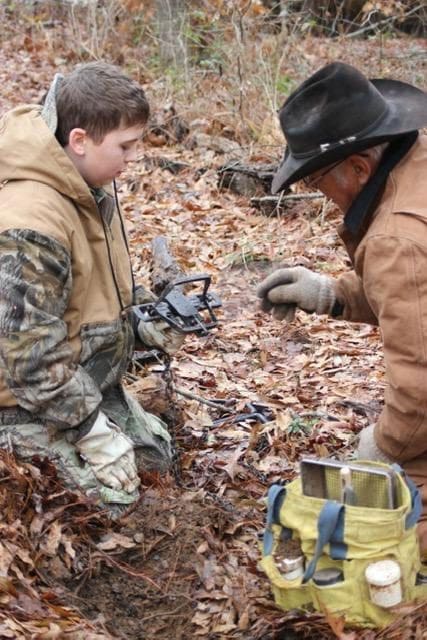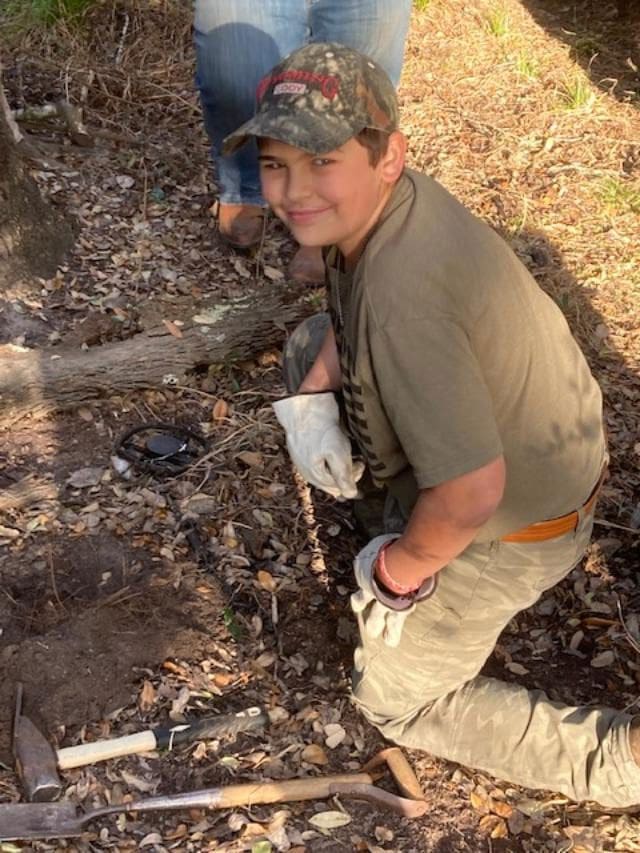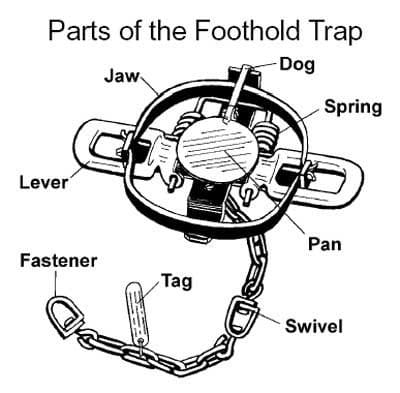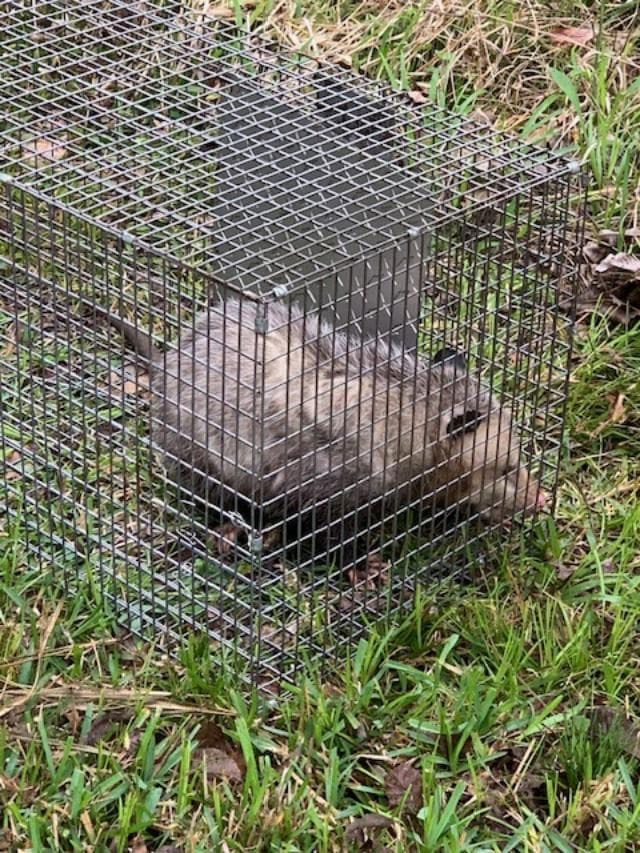Learn Something New: The Art of Trapping
Tags:
by Heidi Lyn Rao

Learn Something New: The Art of Trapping
Trapping is the oldest form of hunting in the world. It was the trappers who opened the West for settlement. Trappers were the first contact between Indians and the outside world. It was these entrepreneurs who blazed the trails that Lewis and Clark, the U.S. Calvary, and the Railroads followed to make this a nation that reached from sea to shining sea.
Although it is becoming increasingly more difficult to get permission from landowners to hunt deer, pheasant, and other game animals, many would welcome someone to thin out the nuisance furbearers. Raccoons, otters, beavers, and nutria cause a lot of property damage. Bobcats and coyotes cause a loss in livestock. With fur prices at an all-time low, there are not a lot of trappers in it for the money. This opens the door for trapping for sport. You just need to know the right equipment and how to use it.
Leg Hold Traps

Leg hold traps are sometimes referred to as “restraining devices” or steel traps. The main parts of a leg hold trap consist of a pan, curved jaws, and springs. To set the trap, the jaws are opened, compressing the springs. While holding the jaws open, the pan is lifted and secured by a “dog,” a thin, flat piece of metal. The pan keeps the jaws open, while the springs apply pressure on the pan, which is held in place by the “dog.” The trap is now set.
The trap is placed where a targeted species of furbearer would either step, such as a game trail or in an area frequented by the animal. The trap is then hidden, and some type of bait is placed in a hole behind the device, or an attractant or lure is added to a backer such as a log or clump of grass. The furbearer then tries to get the bait or sniff the lure and steps on the pan, releasing the jaws. The jaws of the trap snap around one or more legs, holding them in place. The trap is secured by a drag, ground anchor, or by tying it in place to a log, tree, etc.

A properly set trap is very humane. The jaws of the trap only hold the animal in place without breaking bones or causing other serious injury to the animal. Even leg hold traps with “teeth” are humane. In fact, jaws with “teeth” can be more humane than traps smooth jaws because these traps hold the animal more securely preventing movement. Nontargeted animals can be easily released without injury from properly set leg hold traps.
There are many different types of traps, so you need to know the rules and regulations in the state you are trapping in. There are traps with paddled jaws, smooth jaws, toothed jaws, laminated jaws, and offset jaws to name a few.
There are many ways of setting leg hold traps. Like the type of trap, you need to know the laws in your area regarding how the traps are set. There are water sets, dirt hole sets, flat sets, post sets, and many other ways of setting traps.
Body Grip Traps
Body grip traps or conibears, are square traps with double square jaws. The main parts of the body grip trap are the heavy square jaws, very strong springs, and a trigger. The springs are compressed which opens the jaws and then the trigger holds them in place. Extreme caution must be used in setting these traps. The trigger system is very sensitive.
There are several reasons why you must be very careful when using a body grip. First, a set trap is very easily mistaken for a safe, closed body grip. Second, once set, the body grip is easily tripped and quickly catch the trapper! Smaller body grip traps can easily break your fingers or hand and a large body grip can break your arm. If you are unfortunate enough to find yourself in this situation, it gets worse. You will probably not be able to remove the trap with only your free hand. Make sure that you have a setting tool at hand to open the trap to remove your trapped appendage.
These traps are lethal to any animal that enters and must be set very carefully. Most states have many laws that regulate the use of these devices. Body grip traps should never be set near neighborhoods, residences, or any other place that pets could accidently be killed. Many states prohibit body grips over a certain size. For example, in Texas body grip traps with a diagonal opening over 10-inches are prohibited on land or in less than 6-inches deep in water.
There are many ways of setting body grip traps for animals. Traps can be placed on a trail, log, bucket, or box with bait placed so that the animal must pass the trap. Many times, body grip traps are set in water for beaver, musk rats, mink, and nutria.
Dog Proof Traps
A dog proof (DP) trap is designed to catch raccoons although it is capable of catching opossums, skunks, and grey fox. This trap was created to be used around populated areas or rural houses where domestic pets such as dogs and cats are present to catch problem raccoons. These traps have proved to be so effective that trappers use them regularly wherever they set traps.
The main parts of a dog proof trap are the body, spring, stake, and trigger. The dog proof trap is by far the easiest trap to use and an excellent trap for beginners to master. To set the dog proof trap, you need to depress the spring into the body of the trap which is usually just a cylindrical tube. The spring is very strong so you may need to use dog proof setters to depress the spring if you cannot do it by hand. After the spring is depressed, the trigger is then set. Once the dog proof trap is set, it is pushed into the ground to hold the trap upright. Bait is then drooped into the body to entice the raccoon into reaching inside to retrieve the food. When the raccoon is trying to retrieve the food, it hits the trigger, snapping the spring, trapping the foot. Bait can be a commercial mixture or dry dog food, fish pellets, or any other attractant.
Snares
Snares are cables that are looped with a lock. The cable is secured to the end of the lock, then the cable is run through the slide end of the lock forming a loop. The snare works by allowing the head of an animal to pass through the loop. The loop then closes around the neck. The more the animal works against the snare the tighter it gets. The animal is held tight until it is removed from the snare.
Snares are easy to set but can get an inexperienced trapper in trouble. They indiscriminately catch everything. This means that game animals or other nontarget species can be caught. In some cases, the nontarget animal is killed which can lead to legal issues. It is advisable that beginners should work with experienced snare trappers to learn the correct way of setting them.
Cage Traps

Cage Traps Cage traps are commonly called live traps or humane traps. These are rectangle shaped
boxes that allow the animal to enter. Once the animal enters in search of bait, they step on a pan that trips the door which slams shut, trapping the animal inside the cage. The animal can then be dispatched or relocated. Cage traps are very easy to use and are great for individuals just getting into trapping. They are also good for trapping one nuisance animal, good for areas that other devices are prohibited, and great for those who do not want to kill the animal.
Unfortunately, they are relatively expensive and take up a lot of space. Another disadvantage is that there are some animals that will not enter a cage trap such as a coyote. Skunks cause another problem. It is very difficult to deal with a live skunk in a cage trap without getting sprayed.
Trapping is a very fun way of getting outdoors. Just make sure that you are familiar with the laws in your jurisdiction. Trapping is also a great way of making a few extra dollars. There are still wholesale fur buyers that will purchase your hides if they are handled properly. You can also tan your hides and sell them as a finished product for wall hangers.
